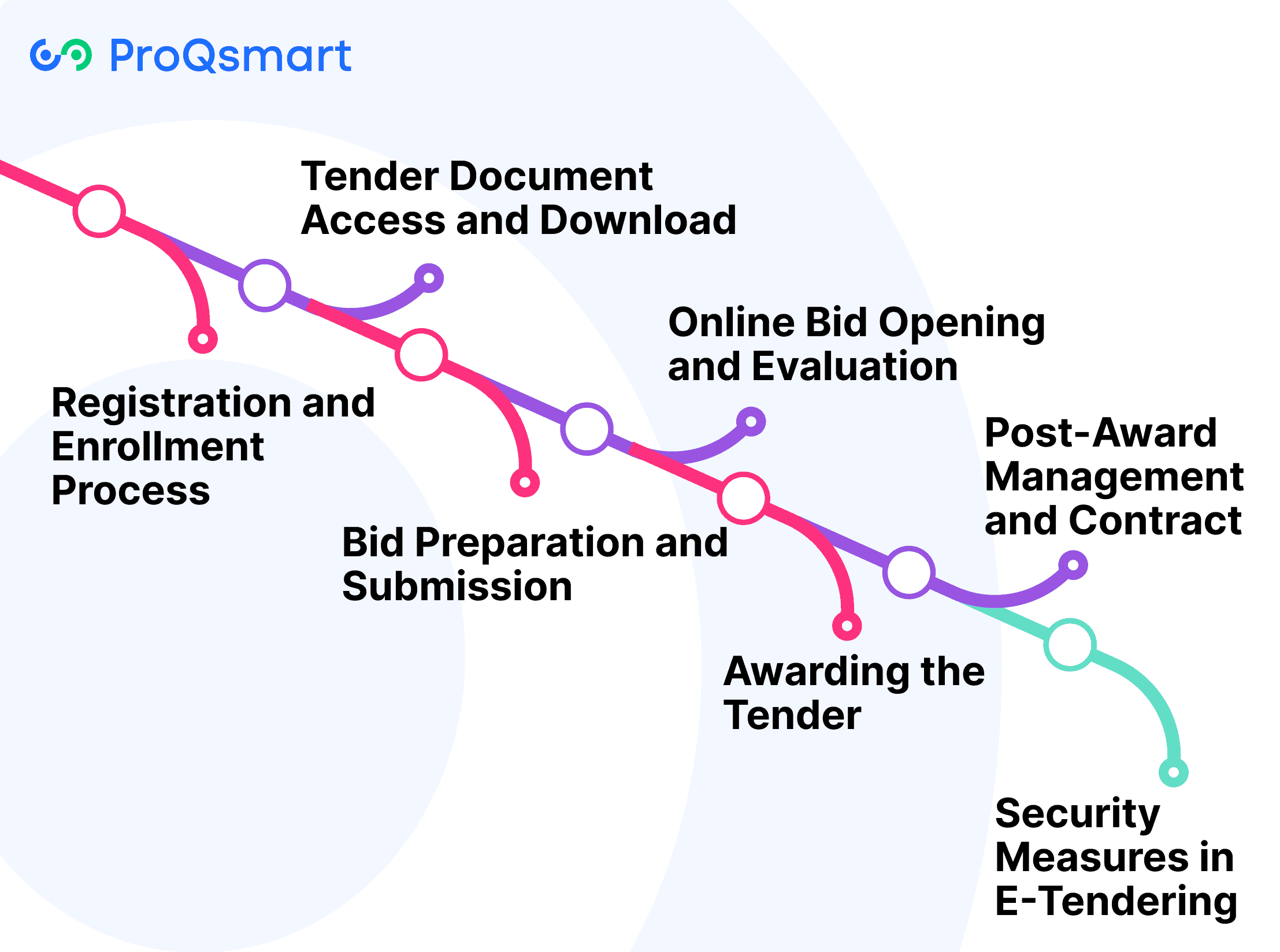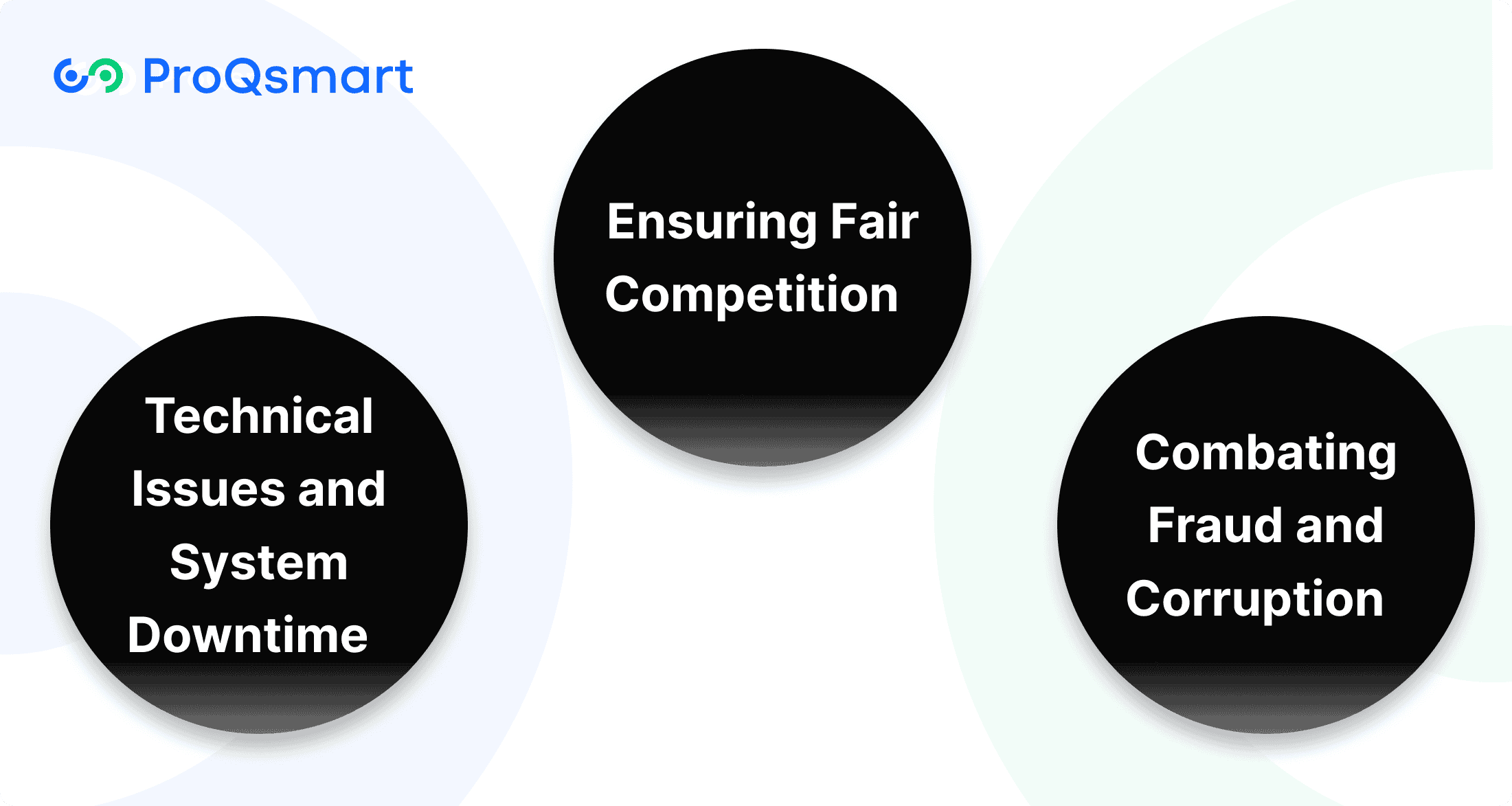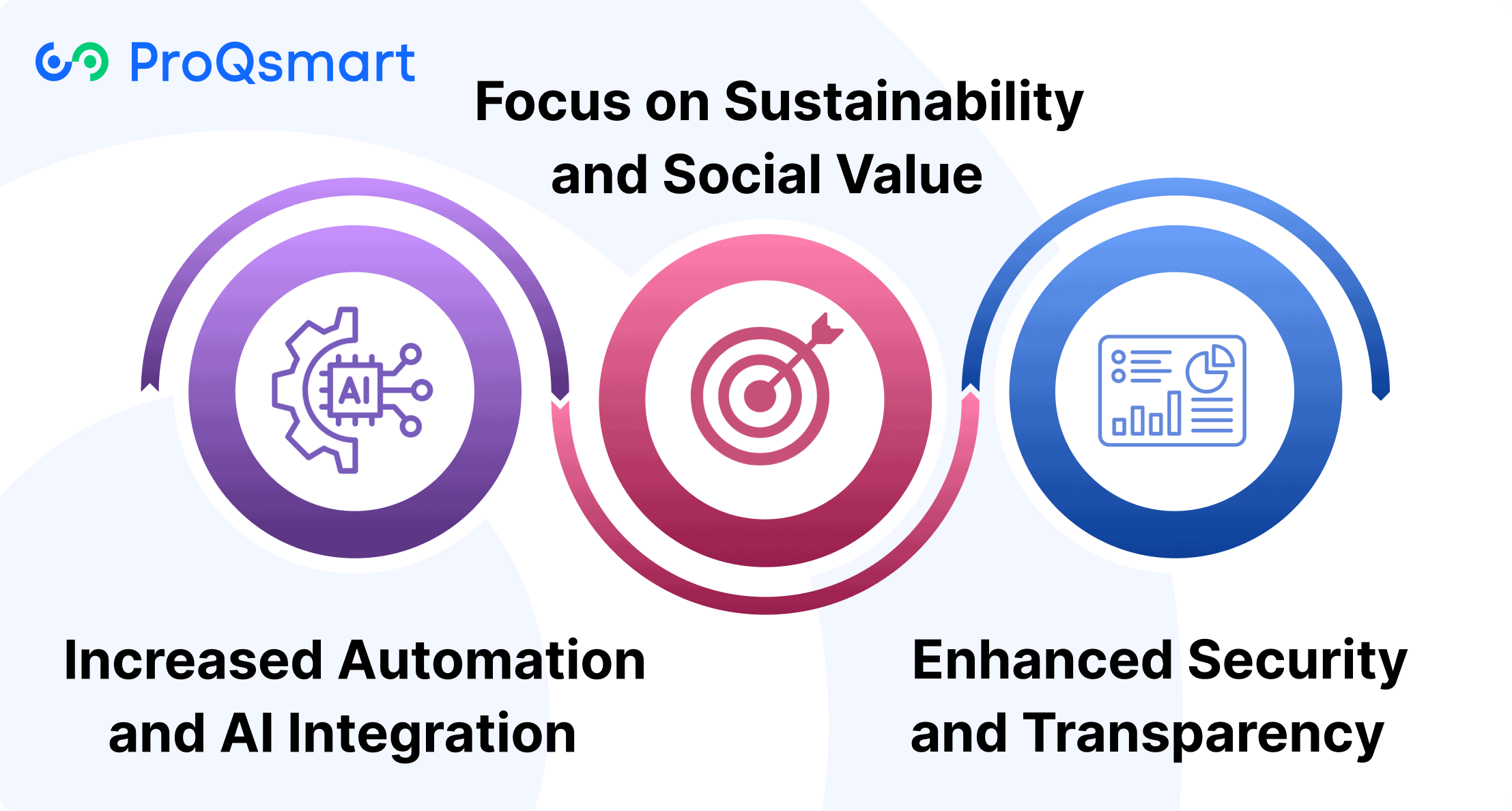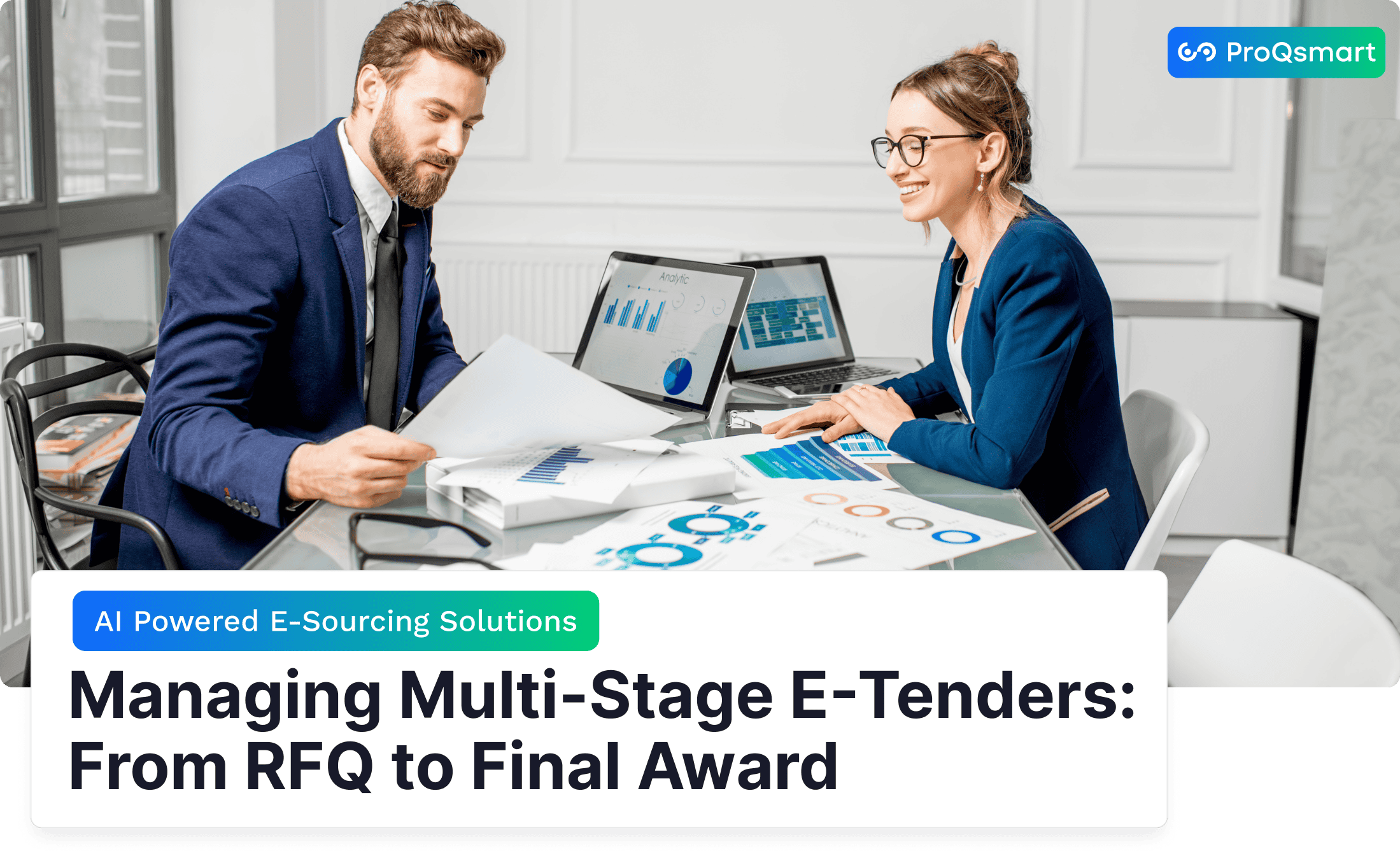E-tenders, or electronic tenders, are procurement processes in which businesses use online procurement platforms to invite suppliers digitally to provide bids to supply requested products or services. They make the whole tendering process easier and faster than ever, providing a clear, effective and completely digital method of sourcing.
With e-tenders, you can quickly organize and filter supplier submissions and effortlessly compare proposals. This centralized system makes it easier for you to track and ensure compliance with procurement policies. This method eliminates the administrative burden while improving supplier relationships through enhanced communication and equitable consideration.
Moreover, as procurement continues to advance and adapt to digital transformation, e-tenders are a scalable, time, and cost-effective solution to manage the complexities of enterprise-wide sourcing requirements. Use e-tenders to your advantage to streamline your organization’s procurement processes. This will put you a step ahead to stay competitive in a market that is always changing.
Key Components of E-Tender Systems
A centralized digital storage makes it easy to keep all bids for easy access and comparison, helping to make more accurate decision-making. By leveraging AI, platforms such as ProQsmart automate the repetitive tasks that bog down day-to-day workflows.
One of the biggest advantages, though, is its aid in promoting broader supplier engagement. With virtual access, suppliers both large and small from a wider geographic area can more easily respond to RFPs. Thus, this level of inclusivity creates a highly competitive environment, positively impacting pricing and the quality of service delivery.
ProQsmart’s real-time collaboration not only provides transparency, but collaborative tools that ensure communication is always open with suppliers. This builds trust and builds up healthy relationships for the long haul.
Transparency is the second cornerstone. E-tendering provides bidders with the same access to the pertinent information related to their bids, including their submission deadlines and requirements. Platforms such as ProQsmart provide unparalleled transparency.
Intuitive designs prioritize ease of navigation, making it simpler for suppliers to participate. ProQsmart also easily integrates with other procurement tools to help manage every stage from subcontractors to capital expenditure sourcing.
How Do E-Tenders Function?

E-tendering transforms the procurement process by utilizing digital platforms. It simplifies and accelerates the tendering process, making it more efficient and transparent for buyers and suppliers alike. It removes the burden of paper-based processes and cuts submission time in half or more.
Plus, it brings everything tender-related to one convenient portal. With the help of dynamic price comparison, multi-round electronic auctions, and as well as ideas like bettering competition and improving decision-making for organizations become achievable through e-tenders.
1. Registration and Enrollment Process
Suppliers begin by registering on e-tender platforms, following these steps:
-
Fill out all provided online registration forms, including company information, main point of contact, and up to date contact information.
-
Fill in or upload any essential documents like tax clearance certificates, business registration, and licensing.
-
Submit references and past performance records for verification.
Supplier credentials verification significantly improves the chances of dealing with reliable suppliers and will help build trust from the very get-go.
2. Tender Document Access and Download
Suppliers are able to view tender documents through specific secure supplier logins. Current documents are essential for bidders to submit competitive bids, and as well as clear instructions on how to access them reduces retrieval time and potential holdups.
Correspondingly, centralized digital storage simplifies access and ensures all participants work with consistent, accurate data.
3. Bid Preparation and Submission
Pricing, timelines, and compliance with requirements are all key elements of a bid. Suppliers have to be careful about submission deadlines as online, electronic systems generally automatically timestamp submissions in real time.
4. Online Bid Opening and Evaluation
Bids are always opened electronically, guaranteeing the needed transparency. Evaluation factors such as price and quality are used consistently.
Solutions, such as ProQsmart, automatically deliver real-time updates, allowing proactive and as well as compliant evaluations to be handled in the most efficient manner.
5. Awarding the Tender
Contracts are awarded openly through public announcement, enhancing the procurement process. ProQsmart adds a new level of transparency with built-in communication tools, concluding with e-signatures on digital tender documents to finalize each agreement.
6. Post-Award Management and Contract
Continuous supplier performance monitoring guarantees that potential vendors comply. ProQsmart automates this, enhancing the procurement process and creating synergy between procurement and budget tracking for the best results.
7. Security Measures in E-Tendering
While encryption keeps sensitive information secure in the procurement process, access controls protect against unauthorized access, making ProQsmart an innovative solution for organizations.
Understanding Multi-Stage E-Tenders
Multi-stage e-tendering is a structured procurement strategy designed to manage complexity by dividing the tender process into distinct phases. Unlike single-stage tendering, which consolidates all submissions and evaluations into one round, this method enhances the procurement process for large-scale or intricate projects. Besides, by ensuring a systematic and transparent progression, potential vendors are shortlisted and evaluated step-by-step, fostering thoroughness and accountability in the contract management.
Key Differences from Single-Stage E-Tenders
Perhaps the most important difference in the e tendering process is in the level of engagement. In single-stage e-tenders, all suppliers submit fully detailed proposals from the outset, which can inundate evaluators as they wade through dozens—if not hundreds—of submissions. Moreover, multi-stage e-tenders, on the other hand, simplify the procurement process by whittling down choices in upfront stages like prequalification or request-for-information (RFI) stages.
Advantages of Multi-Stage E-Tenders
As one example, requiring three shortlisted suppliers to submit final bids spurs real competitive tension, boosting bid quality and delivering more cost-effective results. The advantages to this multi-stage tendering process are plenty. Besides, by demystifying the procurement process, organizations can more thoroughly vet potential vendors’ credentials, helping guarantee they align with the formal buyer requirements needed for the success of a project.
Leveraging Technology for Efficiency
Using ProQsmart to automate document management and compliance checks in the procurement process allows firms to focus more on producing quality submissions efficiently. It even provides AI-driven proposal reviews, saving you time while maintaining quality. ProQsmart’s transparent activity trails promote accountability and empower stakeholders around the predictable, measurable, and actionable data in government contracting.
Integration with Budget-Driven Procurement Strategies
Multi-stage e-tendering dovetails perfectly with a growing interest in budget-driven procurement strategies. For one, it allows organizations to take advantage of marketplace tools such as ProQsmart, which provide real-time tracking and monitoring of supplier performance. Therefore, this unique blend of technology and structure streamlines workflows, strengthens decision-making and accountability, and maximizes efficiency in the procurement process, especially in government contracting.
Challenges in E-Tendering

E-tendering provides tremendous benefits in the procurement process, but it comes with myriad challenges that organizations must navigate to truly unlock its potential. These challenges range from technical problems to ensuring fairness in competition and preventing fraud, all of which require careful planning and strong procurement systems.
Technical Issues and System Downtime
Frequent system downtime can quickly derail important procurement timelines, causing vital deadlines to be missed and leaving suppliers burning bridges. For instance, a sudden outage in the middle of a key bidding window could prevent suppliers from being able to submit their bids.
This example further highlights the need for dependable backup processes and disaster recovery strategies to keep business running despite unexpected disasters. Correspondingly consistent upkeep and frequent updates are necessary in order to improve platform stability and security.
Ensuring Fair Competition
Ensuring a level playing field is very key to having successful e-tendering. We need to make advancing level playing fields for suppliers a priority.
To do this, we must establish consistent and objective criteria that eliminate bias from our evaluation processes. Transparency, ensured through detailed audit trails, builds the public trust that eventually attract a wider range of potential bidders.
For example, ProQsmart increases transparency by offering auditable sourcing data, helping to verify compliance while leveling the playing field.
Combating Fraud and Corruption
The increasing opportunities for fraud and corruption in e-tendering necessitate stronger safeguards. Poor data security practices and a refusal to embrace change can leave systems prey to threats.
Increasing integrity through anti-corruption strategies including ensuring compliance with regulations and utilizing AI tools like ProQsmart can build integrity. Capabilities such as supplier performance tracking and regulatory adherence help to further reduce risk.
Optimizing Your E-Tender Strategy
The road to procurement excellence starts with an effective e-tender strategy. By taking a more structured approach, you can improve transparency, efficiency of workflows, and ensure that tendering processes contribute to your organization’s larger goals. An optimized e-tendering strategy is key to maximizing cost savings and efficiency.
Thus, this reinforces supplier relationships and increases overall compliance with regulatory requirements.
Define Clear Objectives and Requirements
Setting clear and measurable goals for each tender should be your first step. Once you have your objectives clearly outlined, it’s much more straightforward to judge competing supplier submissions against quantifiable metrics.
For instance, proactively addressing a tender’s stated desire to reduce carbon footprint or energy consumption aligns perfectly with the aims of procurement and offers support. Unambiguous guidelines create better clarity in supplier responses by reducing unknowns.
For example, requiring precise technical specifications or bill-of-materials requirements helps ensure that suppliers are able to provide a fair apples-to-apples proposal. This clarity not only promotes better alignment with organizational priorities, but allows each tender to create strategic growth.
Choose the Right E-Tendering Platform
The right is a cornerstone of that success. Robust, user-friendly systems like ProQsmart even make it easy to manage documents, automate workflows, and collaborate in real-time across projects.
Pay attention to important details like ease of integration with your current systems and strong customer support. Focus on superior features such as version control and AI-powered analytics.
ProQsmart, for example, provides advanced features like real-time tracking, compliance tracking, and end-to-end integration with procurement ecosystems to maximize efficiency. These features save inefficiencies and place the power back into the hands of procurement professionals allowing them to make better decisions.
Consequently, they are able to save 30% more on maverick spending.
Best Practices for an Effective Strategy
-
Develop clear, measurable objectives for each tender.
-
Take advantage of platforms, such as ProQsmart to automate and optimize your e-tender strategy with data-driven insights.
-
Foster ongoing collaboration with suppliers to strengthen relationships.
-
Continuously test and iterate e-tender processes to foster ongoing improvement.
Future Trends in E-Tendering

As e-tendering evolves, it’s transforming the procurement process with innovations that enhance efficiency, sustainability, and transparency. Staying informed on these developments is essential for any procurement professional aiming to improve their operations and navigate the complexities of government contracting effectively.
Increased Automation and AI Integration
Automation is streamlining the entire e-tendering workflow by automating repetitive tasks leading to quicker submission times. AI plays a huge role by quickly analyzing different suppliers and making data-driven decisions, speeding up the process while maintaining accuracy and efficiency.
For instance, solutions such as ProQsmart use AI to automatically invite the best-fit suppliers, saving time on tedious tasks and improving results. AI-powered Natural Language Processing (NLP) allows for easier document production and submission, which helps save time and money.
Beyond its potential to streamline cumbersome, repetitive processes, automation lowers errors and operational costs, allowing procurement to be more cost-efficient and scalable, particularly as part of cloud-based technologies.
Focus on Sustainability and Social Value
Sustainable procurement practices are increasingly being incorporated into e-tendering, mirroring a global trend towards more responsible sourcing. E-tender platforms have started to introduce social value metrics to tender evaluations, proactively holding suppliers accountable for their impact on society and the environment.
ProQsmart stands out for its ability to connect the dots between procurement efforts and organizational sustainability objectives by tracking supplier performance and encouraging transparency. Through the promotion of eco-friendly sourcing, e-tendering platforms allow enterprises to not only satisfy regulatory requirements but tackle social responsibilities at the same time.
Enhanced Security and Transparency
E-tendering systems are constantly improving their security features to ensure sensitive data is protected. Platforms such as ProQsmart help ensure compliance and protect sensitive sourcing information through auditable workflows.
Transparency continues to be a fundamental principle, with e-tendering providing unprecedented insight into bid submissions that is vital to fostering trust among stakeholders. Features such as real-time collaboration and document tracking further add to the level of accountability, contributing to procurement processes that are more reliable and secure.
Conclusion
E-tendering has revolutionized the way companies approach procurement worldwide, delivering unprecedented speed, transparency, and efficiency to the sourcing process. By leveraging e-tenders, businesses can simplify the vendor selection process, reduce costs, and improve compliance, making procurement easier and more streamlined. The multi-stage processes and rapidly evolving technology ensure that e-tendering remains a versatile and dynamic tool, capable of meeting complex demands.
While challenges such as data security and system integration exist, they can be overcome with foresight and the right approach. Staying informed about legal trends and future developments is crucial for maintaining a competitive edge in this dynamic field. Whether it involves adopting new technology or adjusting workflows, e-tendering offers numerous opportunities to enhance process efficiency.
The benefits of e-tendering are clear, and the time to act is now. To transform your procurement processes and unlock these advantages, explore ProQsmart and book a demo today. Discover how their innovative e-tendering solutions can streamline your operations, enhance supplier collaboration, and drive business success.




